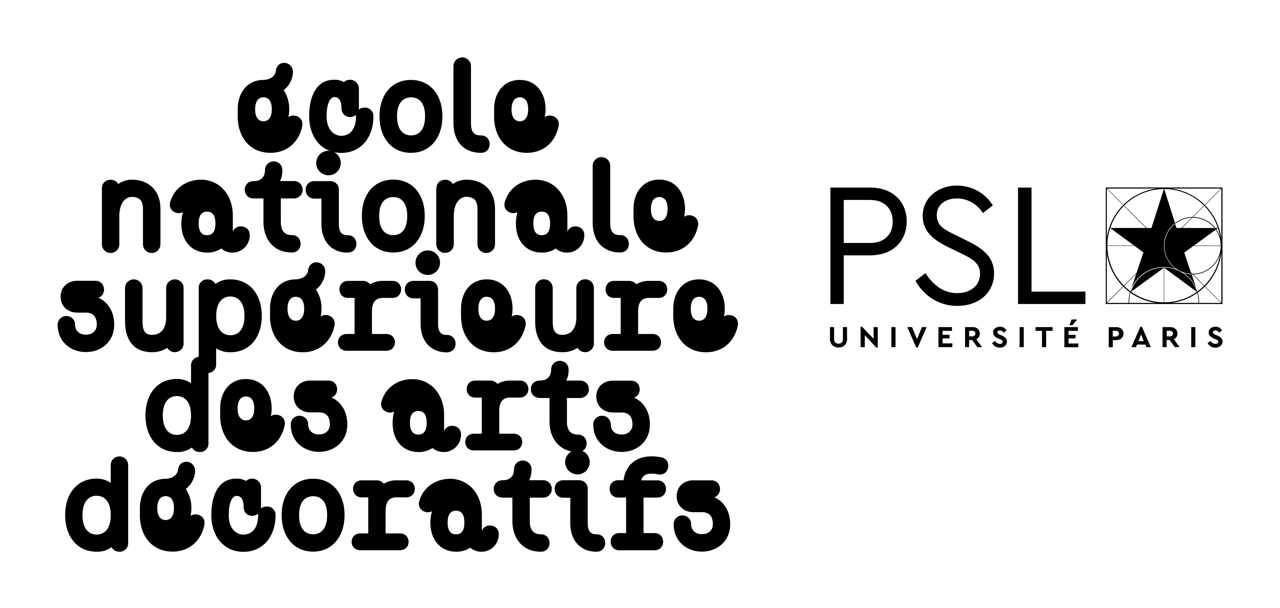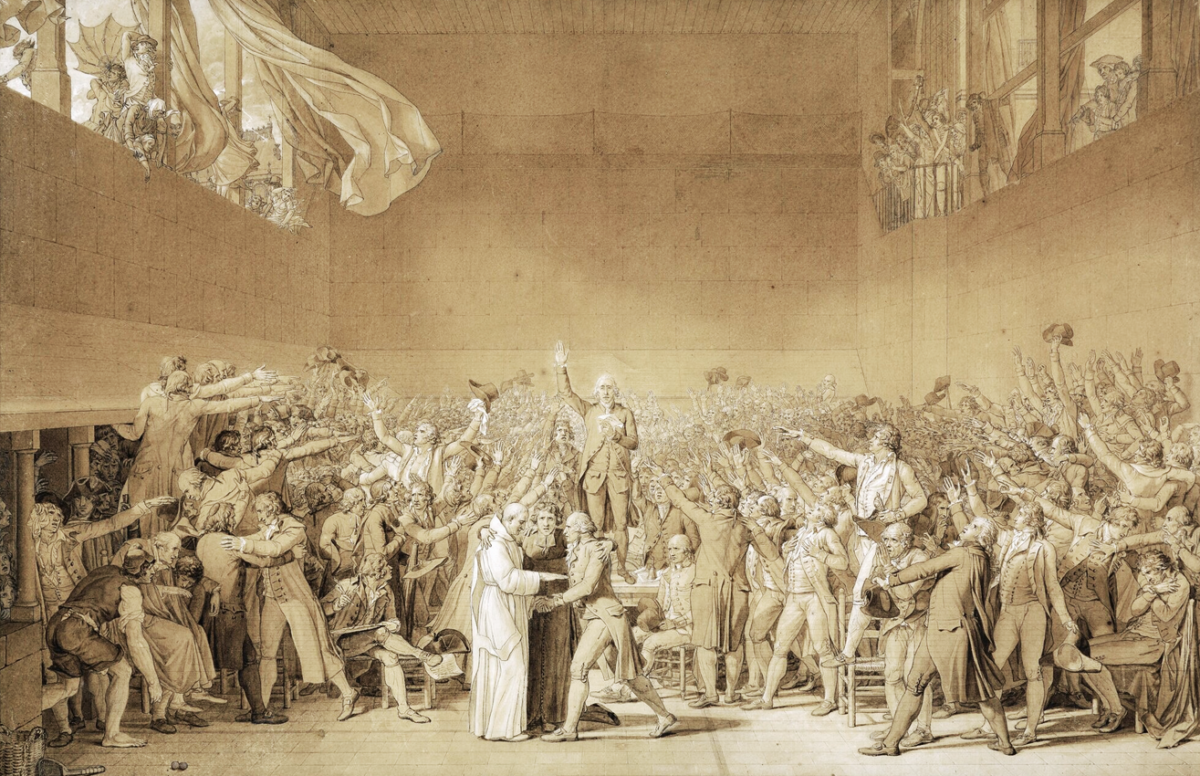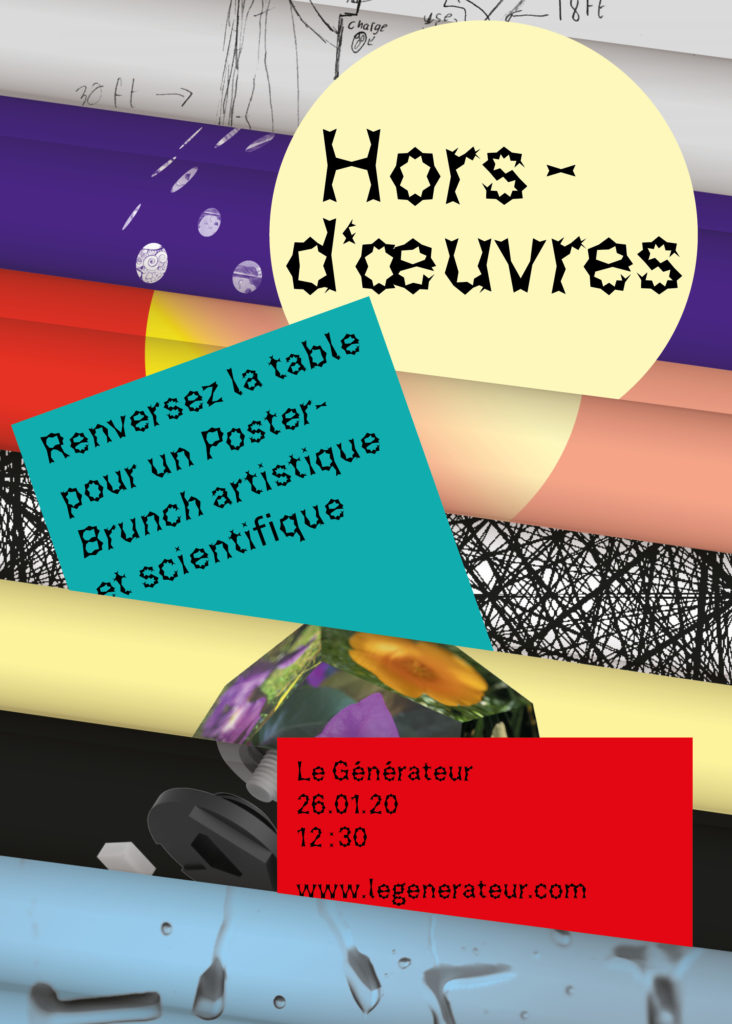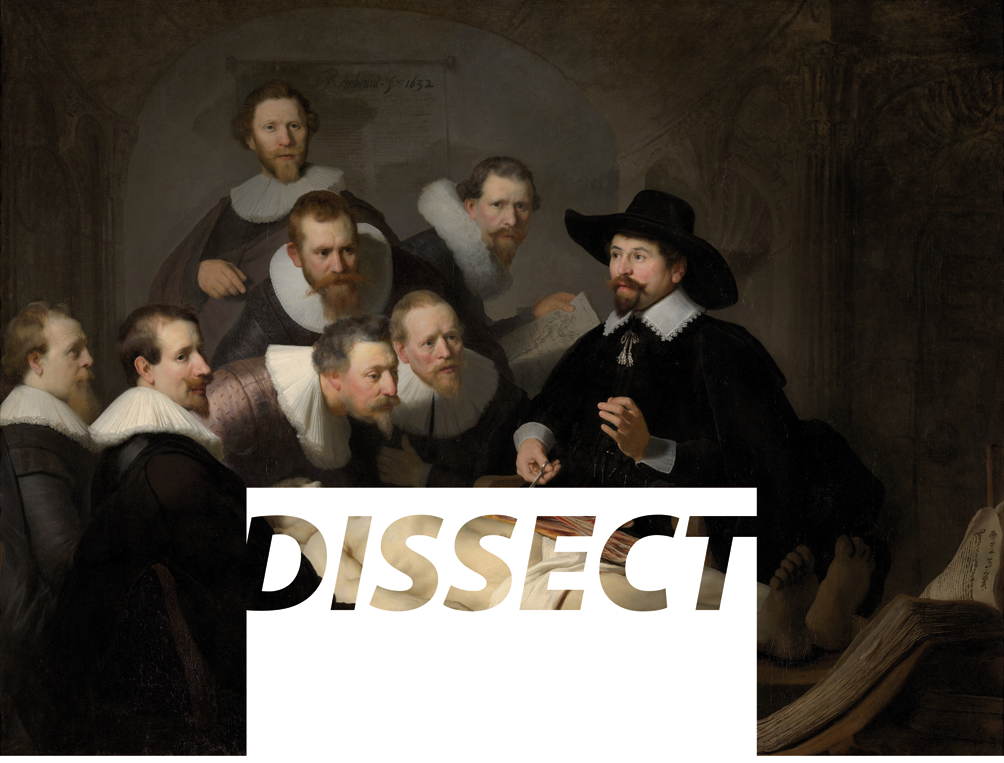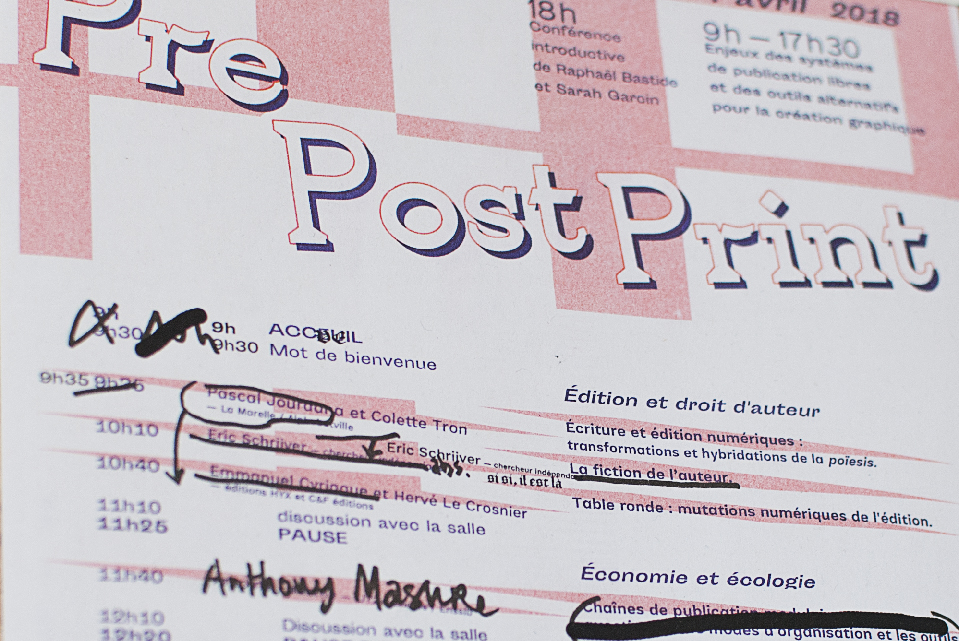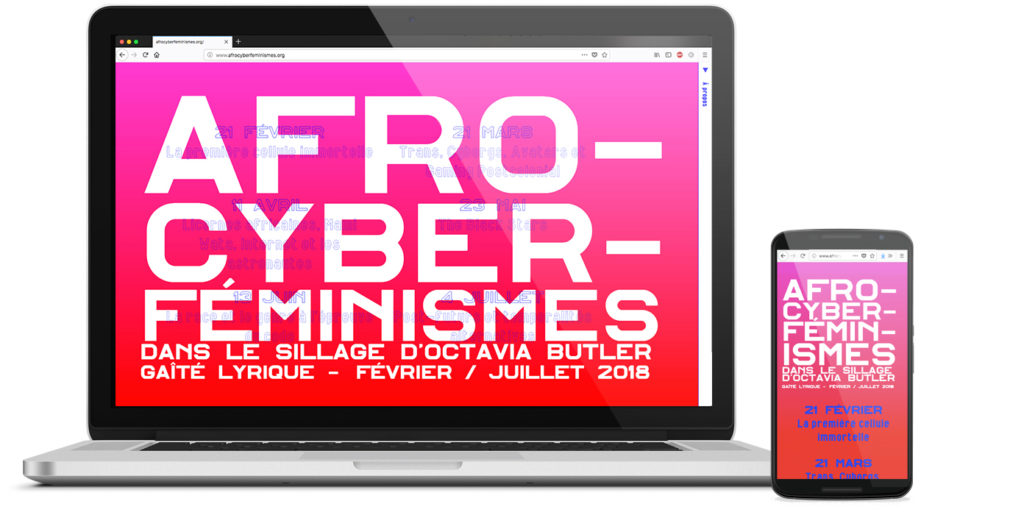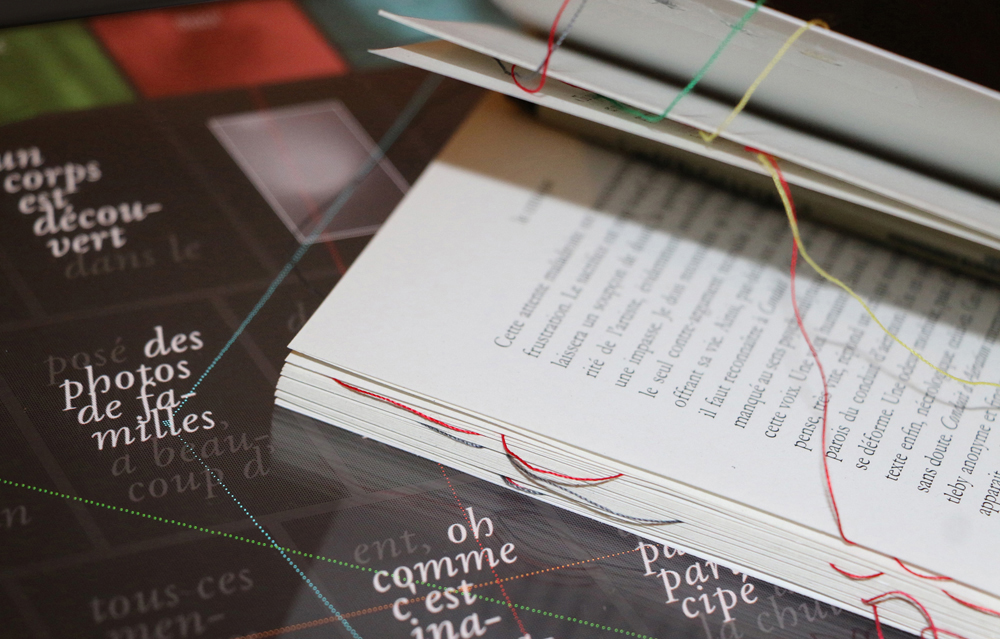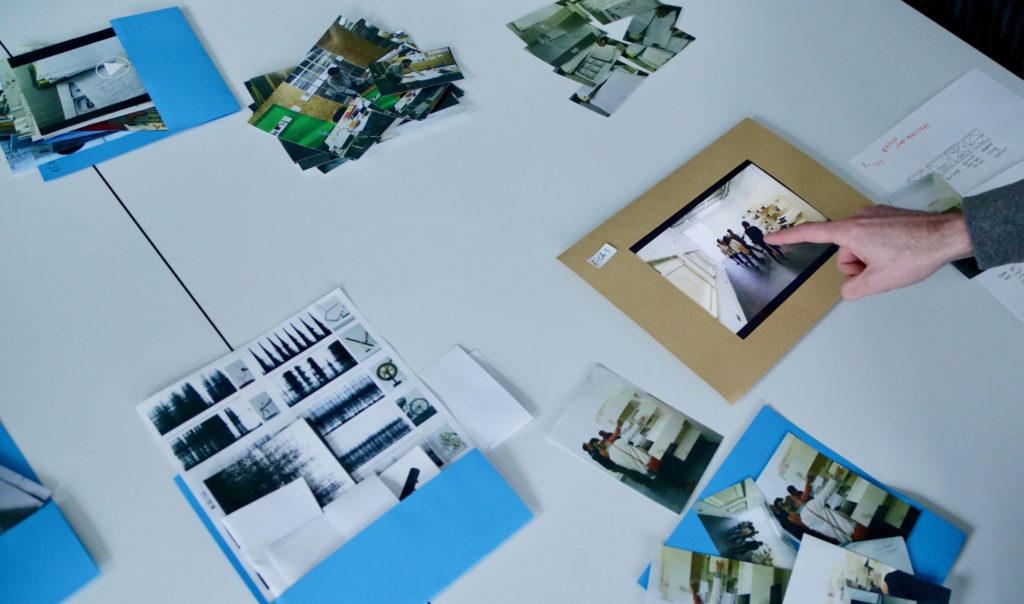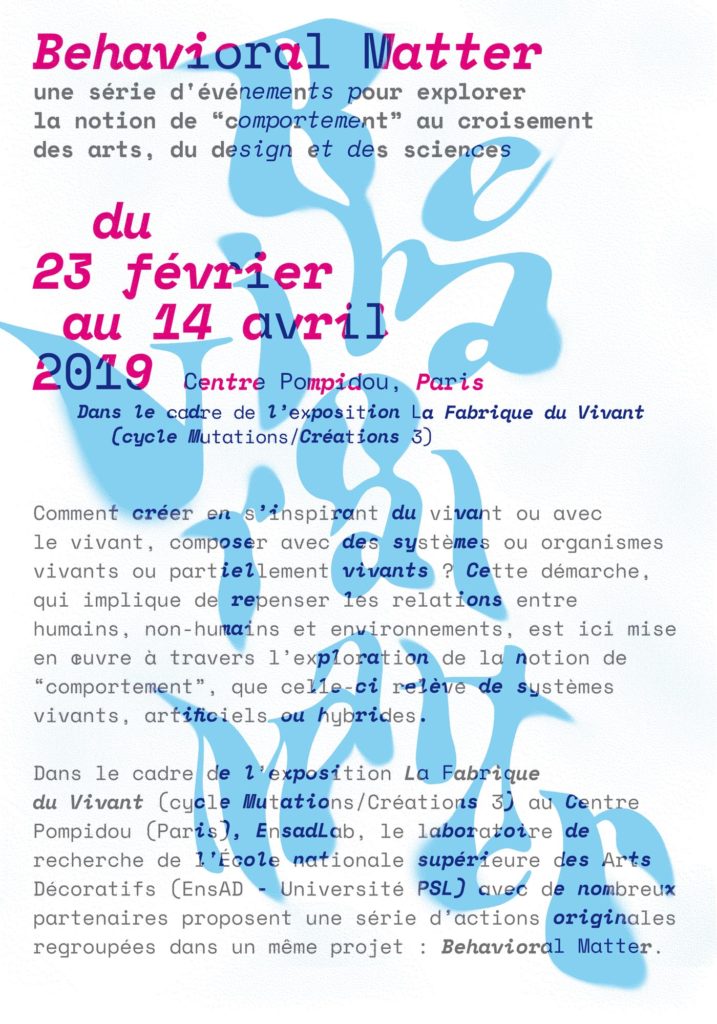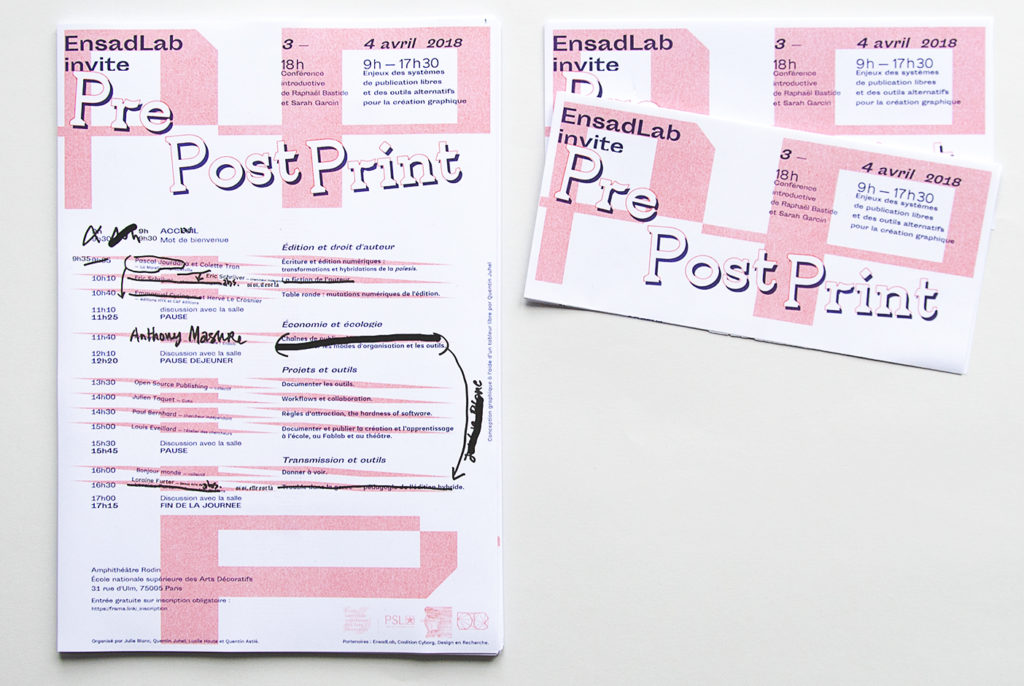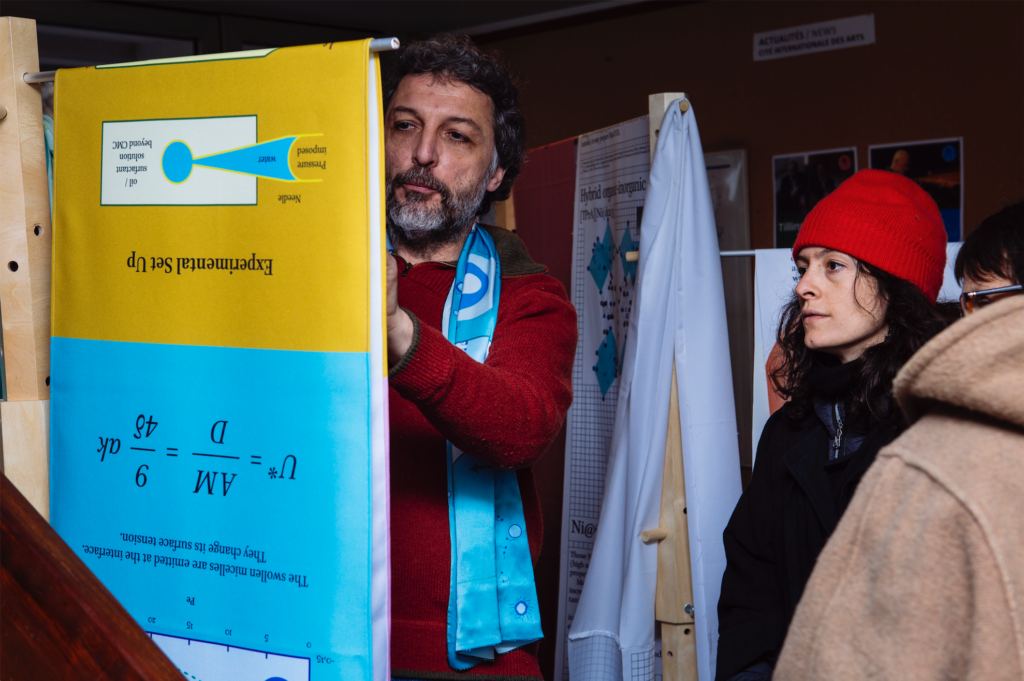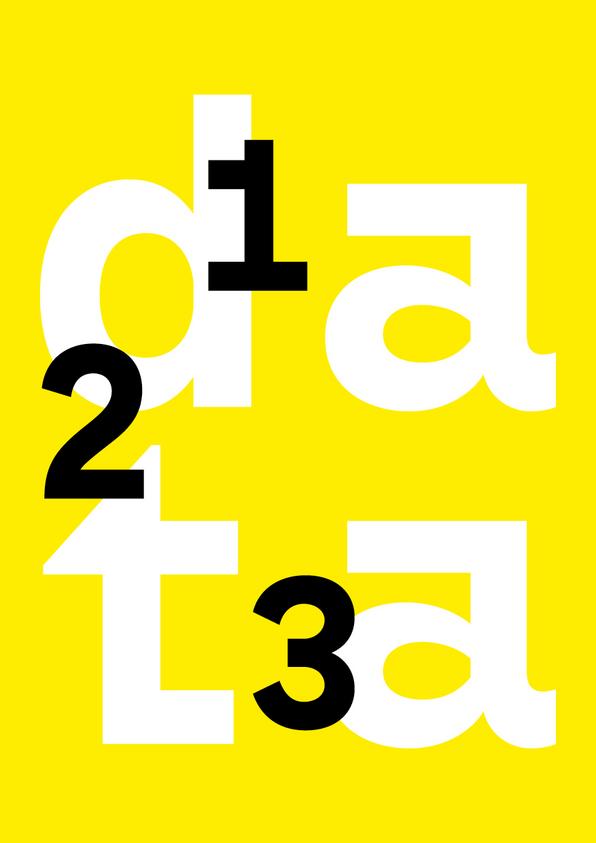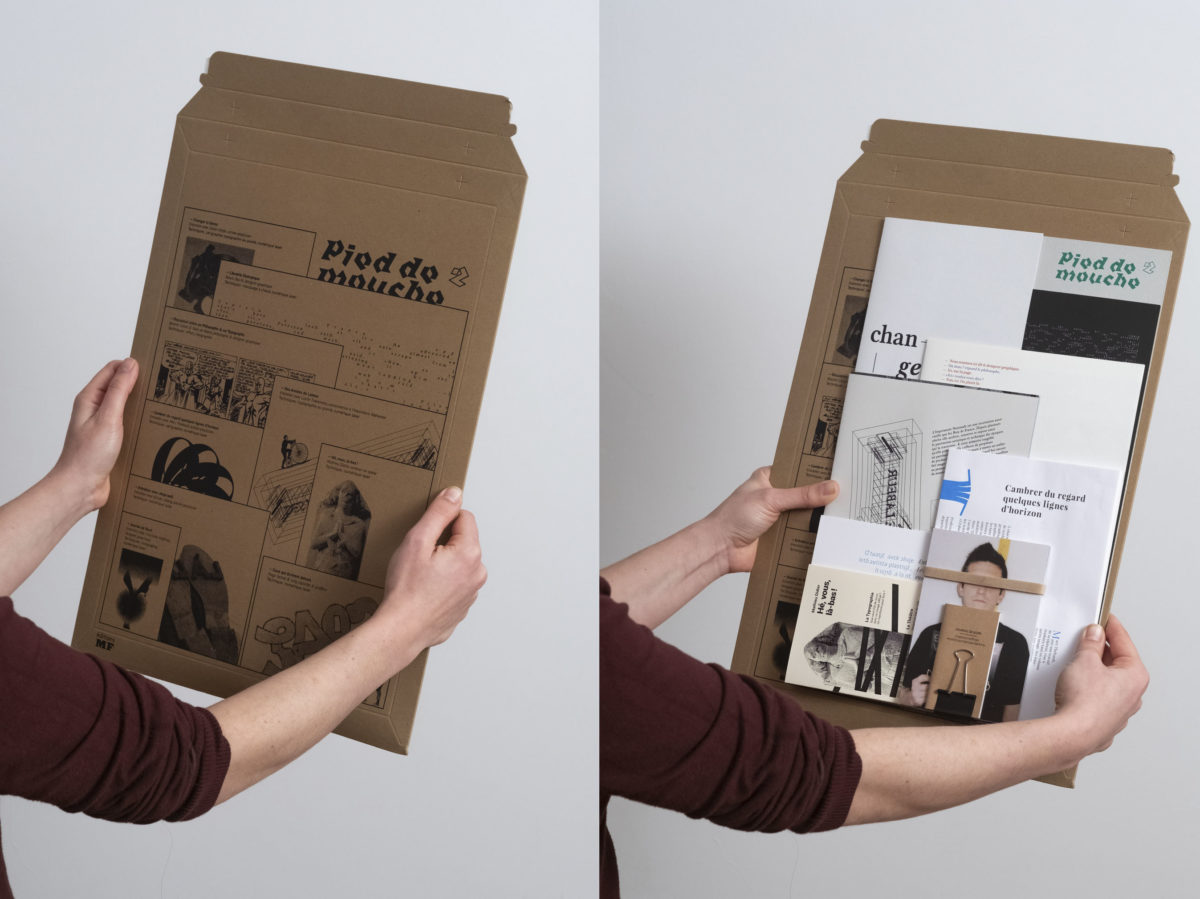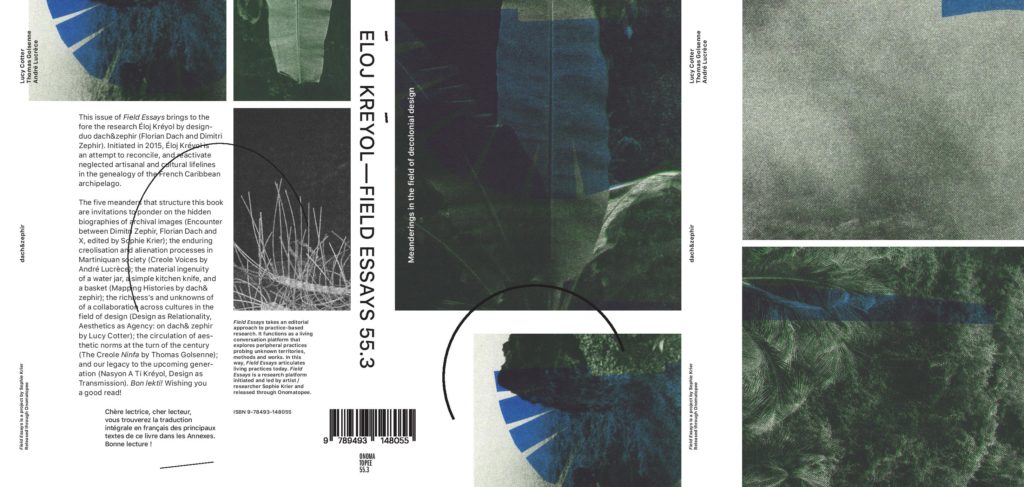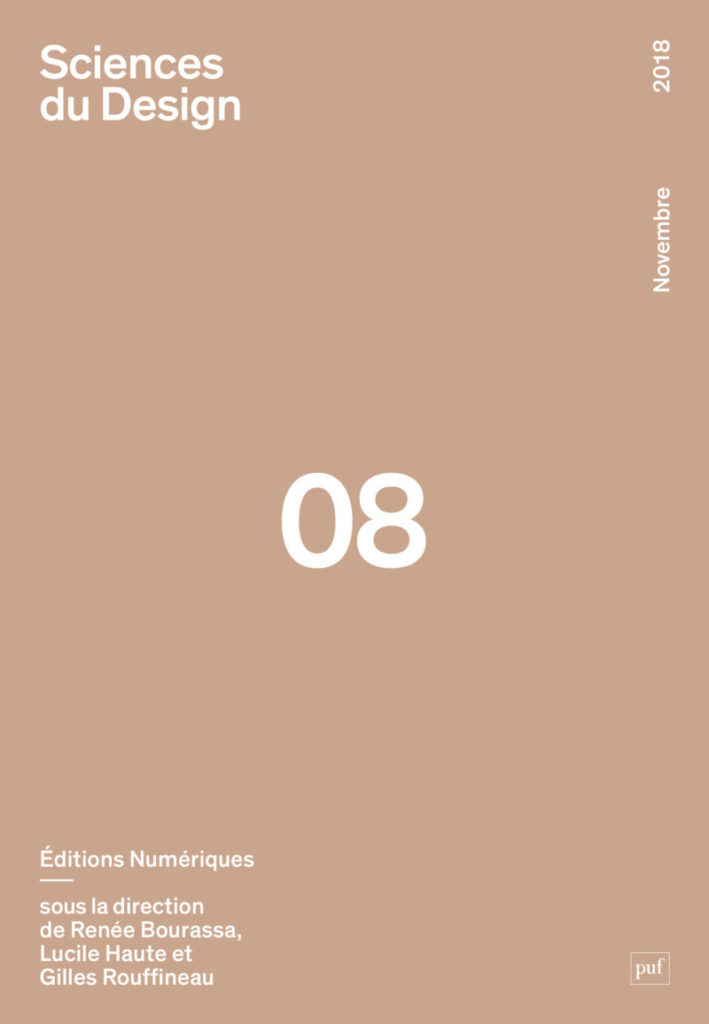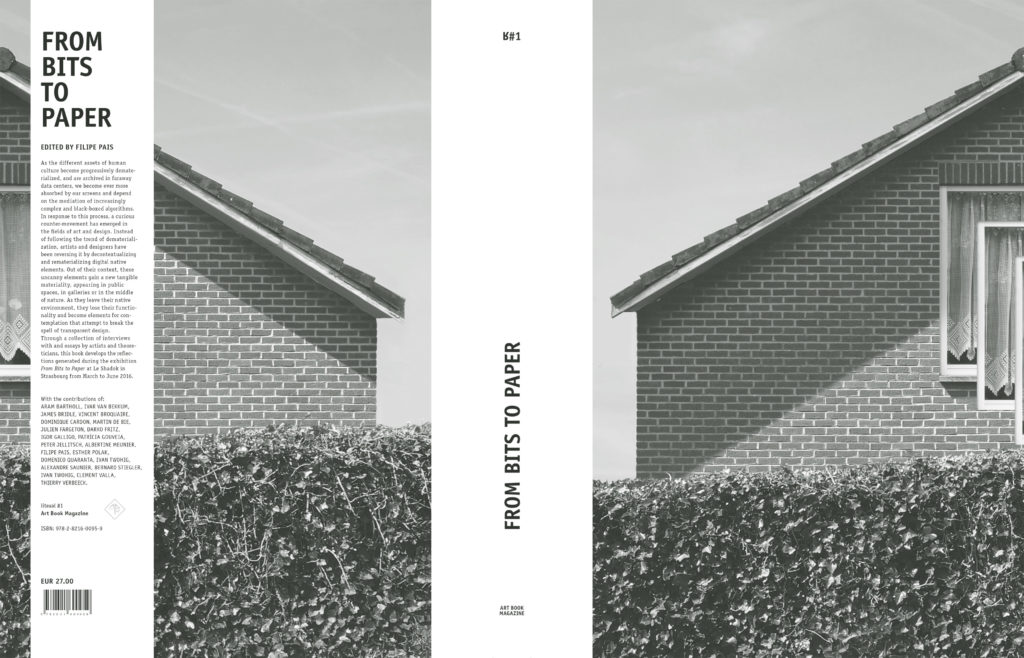A research & creation axis for the Reflective Interaction group of EnsadLab
Publishing is primarily about making ideas public. How do we, operating across arts and sciences, and research and creation, envision new ways of publicizing research-creation in art and design based on practice (research-creation), while taking into consideration academic needs and artistic requirements? What means and media can we resort to or develop that are better adapted to non-textual or at least non-text-based publication? How to disseminate active and interactive formats and media? We endeavour to use new formats of demos, of poster-sessions, data visualization, data materialization, and data physicalization, engage in debates with objects, or explore hybrid multimedia communication systems.

Centre Georges Pompidou, Paris, March 2019.
Unlike researchers from the sciences (hard, natural and social), artists and designers best express their ideas in non-textual formats. The latter are resourceful and often trained to use powerful “media” that can also be used to publicize their work: exhibitions, live performances, visualization, editing, broadcasting, etc. However, academic publication is for the most part in the form of written papers published in specialized journals or presented at peer gatherings (conferences and symposia). We ask how can we open new paths to meet the needs of both academic research and the creative disciplines? How can we combine sensitive experience and transmission of knowledge crossing art, design and science? Could hybrid forms of publicization address both experts and wider audiences?
In the face of the upsurge of programs of research in art and design and interdisciplinary arenas of study and practice, it seems relevant to explore new paths for academic publishing to renew the outdated or poorly evaluated ones. Our projects are conducted with multidisciplinary teams associating artists, designers, engineers, researchers in anthropology, ethnography, cognitive sciences, physics, chemistry and biology. To prevent these forms of publicization from being reduced to the illustration of text, we emphasize the non-textual character of the media. This can be done by reinventing existing formats that already echo artistic practices such as demos, workshops, posters and poster sessions, and tutorials. It can also be explored in more radical ways, exploring existing art productions techniques (from those used in large immersive environments, to smaller media such as photofiction or photonovels, or picture books). The integration of image may also draw from visual methods of research such as those used in visual anthropology or, more recently, the digital humanities.
